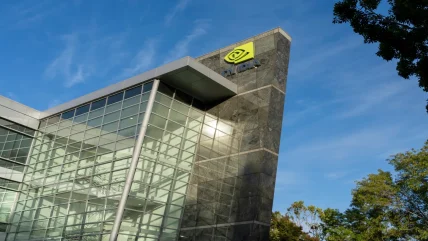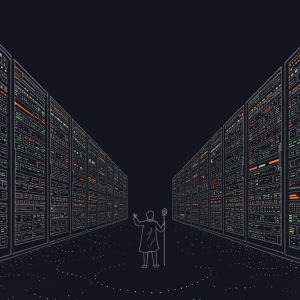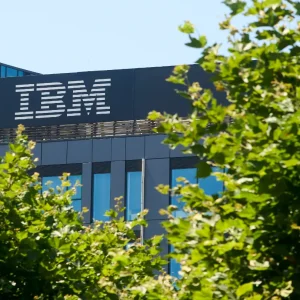
Nvidia has revealed that SoftBank’s Japanese telecom division will be the first to receive chips based on its latest Blackwell design. This move forms part of a larger partnership between the two companies aimed at advancing artificial intelligence (AI) and reshaping Japan’s telecom sector.
Jensen Huang, Nvidia’s founder and CEO, said at the Nvidia AI Summit in Japan that SoftBank is constructing Japan’s most powerful AI supercomputer on the Nvidia Blackwell platform. He also revealed plans to incorporate the Nvidia Grace Blackwell platform for its next system.
SoftBank has also piloted the world’s first combined AI and 5G telecom network using the Nvidia AI Aerial accelerated computing platform. This initiative is projected to open up significant revenue opportunities for telecom operators.
The AI and 5G integrated infrastructure, referred to as the artificial intelligence radio access network (AI-RAN) is said to transform telecom base stations into revenue-generating assets. In an outdoor trial conducted in Kanagawa prefecture, SoftBank’s AI-RAN, accelerated by Nvidia, delivered carrier-grade 5G performance while simultaneously running AI inference workloads. Unlike conventional telecom networks that operate at limited capacity, AI-RAN enables telecom providers to monetise unused capacity by offering AI inference services.
According to Nvidia and SoftBank, telecom operators could generate approximately $5 in AI inference revenue for every $1 spent on AI-RAN infrastructure. SoftBank estimates a return of up to 219% for each AI-RAN server added to its network, factoring in capital and operational costs.
Japan’s AI industrial revolution
“With SoftBank’s significant investment in NVIDIA’s full-stack AI, Omniverse and 5G AI-RAN platforms, Japan is leaping into the AI industrial revolution to become a global leader, driving a new era of growth across the telecommunications, transportation, robotics and healthcare industries in ways that will greatly benefit humankind in the age of AI,” said Huang.
Both Softbank and Nvidia claims that the AI-RAN trial has demonstrated the seamless integration of practical AI inference applications, such as autonomous vehicle support, robotics control, and edge-based multimodal retrieval. They added that all these applications are running efficiently on SoftBank’s AI-powered network.
The Japanese group also plans to deploy Nvidia’s Aerial RAN Computer-1 systems, which are expected to be 40% more energy-efficient than conventional 5G infrastructure. Fujitsu and Red Hat are among the key partners contributing to the development of the AI-RAN trial.
By leveraging Nvidia AI Enterprise’s serverless application programming interfaces and its proprietary orchestrator, SoftBank aims to distribute external AI inference tasks to AI-RAN servers. This strategy will allow for localised, low-latency, and secure AI inference services, maximising the efficiency and utility of computing resources.
“Countries and regions worldwide are accelerating the adoption of AI for social and economic growth, and society is undergoing significant transformation,” said SoftBank president and CEO Junichi Miyakawa. “Through our long collaboration with NVIDIA, SoftBank is leading this transformation from the forefront. With our extremely powerful AI infrastructure and our new, distributed AI-RAN solution ‘AITRAS’ that reinvents 5G networks for AI, we will accelerate innovation across the country and throughout the world.”
The backbone of SoftBank’s upcoming AI supercomputer will be formed by Nvidia’s DGX B200 systems, integrated into the Nvidia DGX SuperPOD supercomputer. This Blackwell-powered system will be utilised for the development of generative AI and other AI-driven projects, benefiting a broad range of sectors, including academic institutions, research facilities, and commercial enterprises.
SoftBank’s DGX SuperPOD, equipped with Nvidia AI Enterprise software and Nvidia Quantum-2 InfiniBand networking, is expected to be Japan’s most powerful supercomputer once completed. According to the companies, this model will also be ideal for large-scale language model development.
The Japanese investment holding company is also set to design another Nvidia-powered supercomputer dedicated to high-performance computing tasks. This system will feature the Nvidia Grace Blackwell platform, integrating Nvidia GB200 NVL72 systems with Nvidia Blackwell GPUs and energy-efficient Arm-based Nvidia Grace CPUs.
In an effort to foster secure and localised AI computing, Nvidia and SoftBank are collaborating on the development of an AI marketplace. The platform, built on Nvidia AI Enterprise software, is designed to support both AI training and edge AI inference. The initiative positions SoftBank as a potential hub for AI innovation in Japan, enabling the creation, distribution, and consumption of AI services across industries, enterprises, and consumers.






